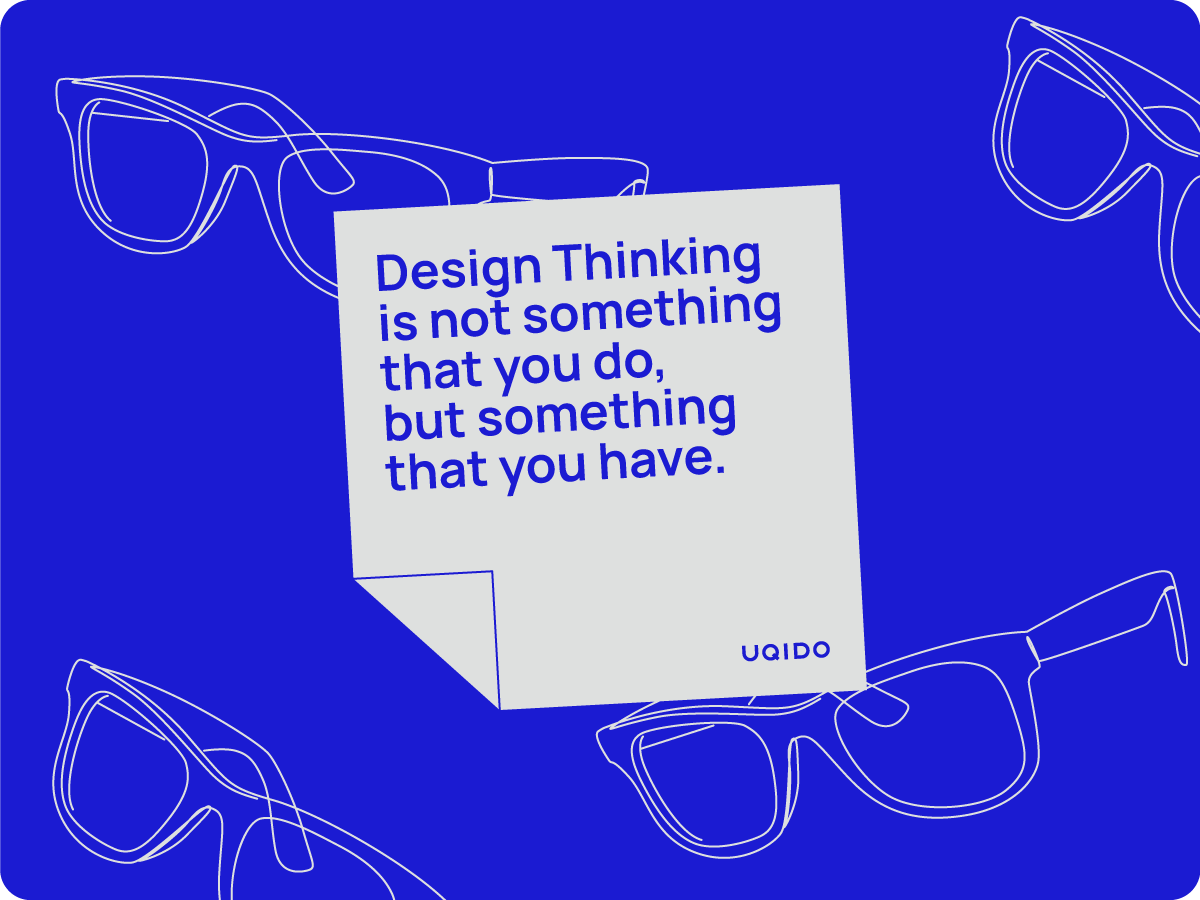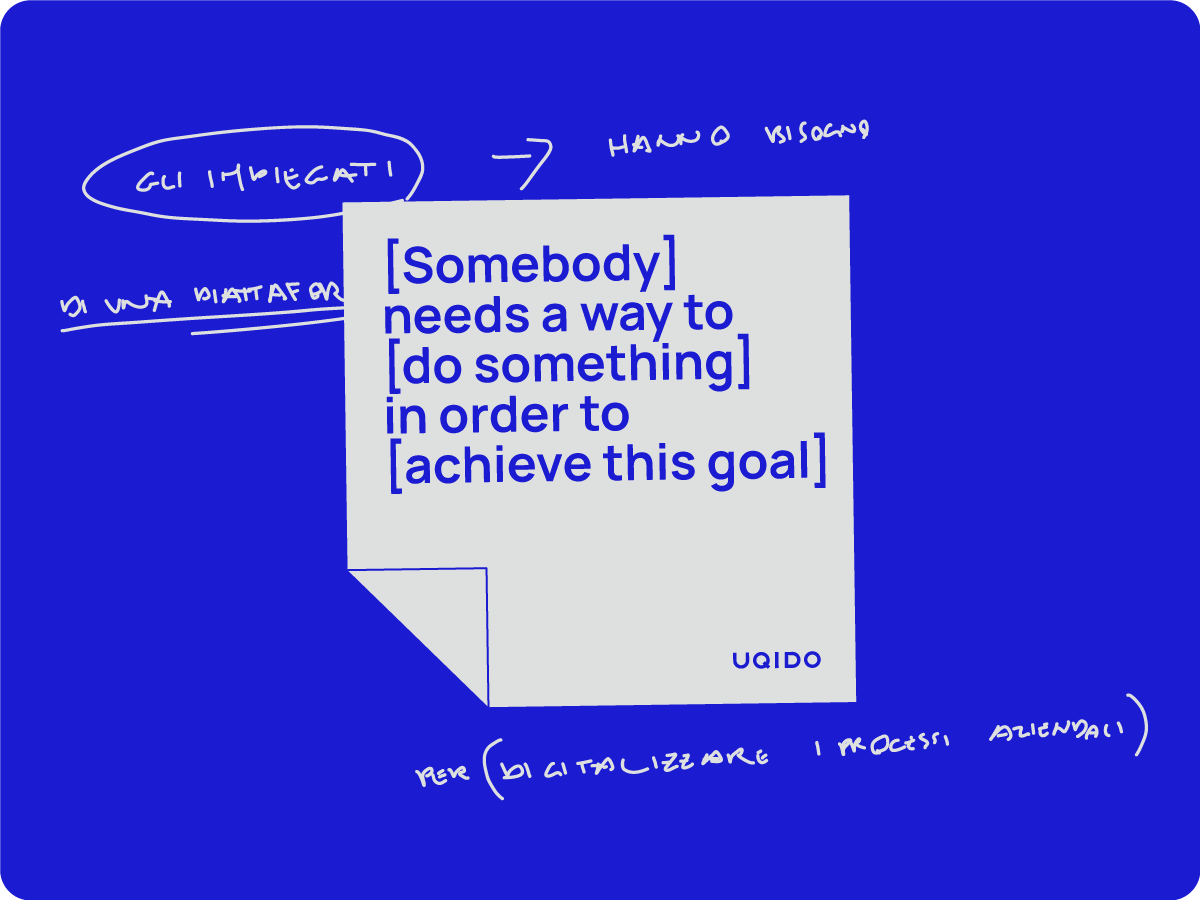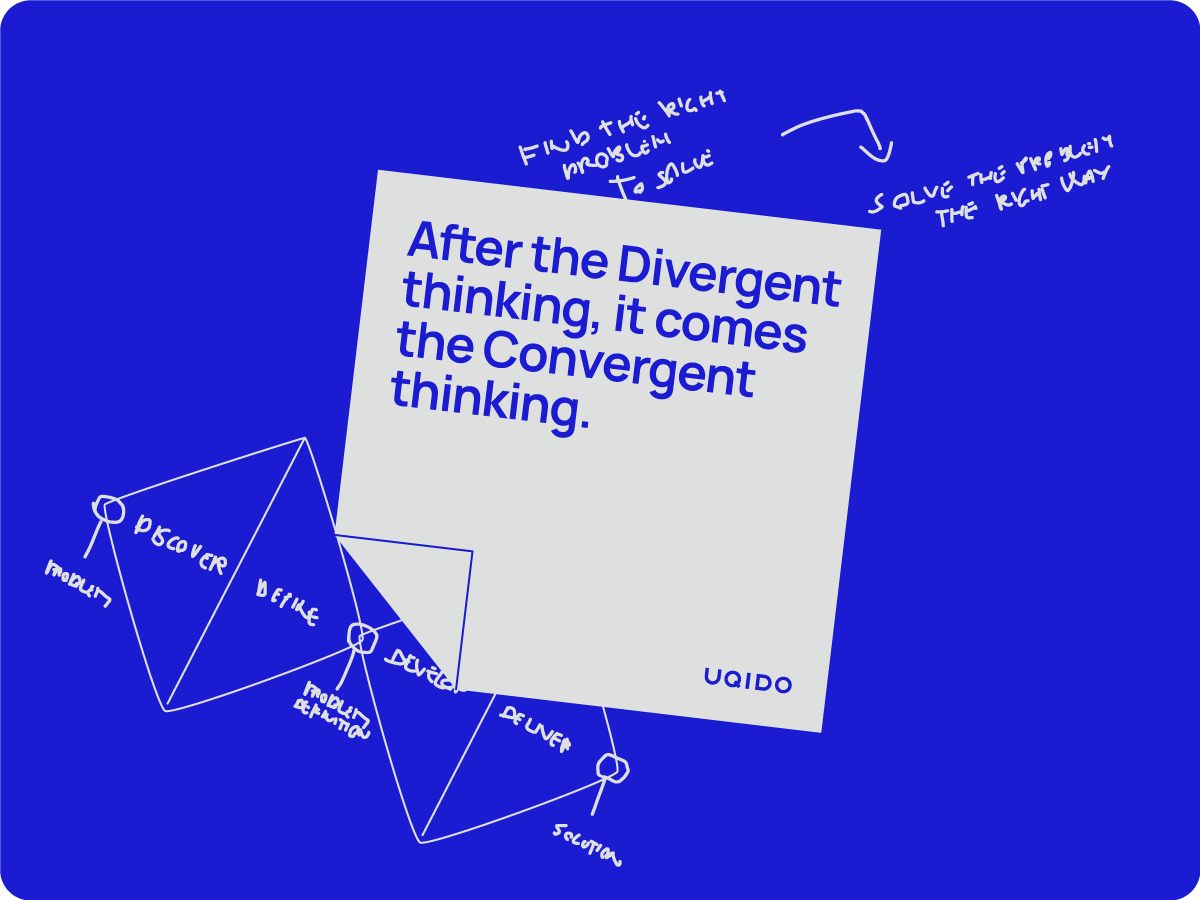What's this "Design Thinking"?
You can find thousands of articles explaining how to do Design Thinking. But Design Thinking is not something that you ‘do.’
In this analysis, we reveal the truth about it.
Warnings
With this in-depth analysis of Design Thinking we want to explain how to bring it in your daily life.
But beware: you could perform everything we tell you perfectly and still not get any benefit.
Design Thinking is not a set of rules, a linear path, or a guide. It’s a mindset, an approach.
If you undertake the activities that constitute it you won’t achieve much.
However, if you use it consciously to change the way you pursue your goals, it can truly change your life.
But first, let’s define it once and for all
Design Thinking is a problem-solving method that stimulates human creativity and lateral thinking to find effective and original solutions to real-world problems.
Think of Design Thinking as a pair of glasses: as soon as you put them on, they change how you see problems and challenges.

Let’s try to make the theoretical approach “solid”
Applying Design Thinking and using it as a tool to stimulate human creativity for finding original solutions to real problems means, for example:
- Writing an article while wondering what truly interests the reader
- Delving into customers’ doubts and discovering that, often, their problem is not the one they sought help for
Always taking a step back and asking themselves, “Are we solving the right problem?”
Design Thinking is a way to make more conscious choices, understand and resolve its doubts. Consequently, anything that lacks empathy, reflection, empathy, and reasoning is not Design Thinking.
One more note
Contrary to what you might think, Design Thinking is not exclusive, reserved only for those distinguished by creativity. Everyone can adopt this approach, and it is essential to do it in a team, to combine different profiles and perspectives.
Design Thinking is not about creativity; it’s about the contribution that each individual can bring.
In companies, people often work alone, without exchanging ideas or sharing insights and visions. On the other hand, Design Thinking encourages to adopt a free, open, and receptive mindset.
Now that you know what it is and what it is not, we can go through the phases that make up this methodology, allowing you to embrace the mindset shift you need.
We’re ready! How to apply Design Thinking?
Design Thinking consists of five phases: Empathize, Define, Ideate, Prototype, and Test.
But remember! It’s not a linear process; you don’t have to follow each step one after the other. Instead, it allows you to mix them, embracing uncertainty and changes in direction.
Empathize — Explore the needs of your audience
Design Thinking requires engaging with your target audience, in our case, the user. The goal is to know the end user, observe them, understand them by practicing active listening and empathy. Often, this involves conducting user interviews, dedicated sessions to explore the their preferences, thoughts, and context. This step is crucial to grasp the user’s needs and requests, enabling you to focus on a personalized solution.
Define — Articulate the problems and needs of the target
Another critical moment is defining the problem. Having understood the user and their context, we can pinpoint the problem that the digital product needs to solve. To help you focus, you can use the user need statement, a formula to help you summarize the key points of your work in one sentence. In this way, you identify your target, their needs, and the purpose your digital product must fulfill.

Ideate — Challenge yourself and formulate proposals
Once you’ve identified the problem, you can start exercising the Divergent approach of Design Thinking, which involves looking at the issue from as many perspectives as possible. Ideally, you do this with an eclectic team, with people from different backgrounds, engaging in a collaborative discussion that allows them to contribute with opinions and ideas based on their culture and sensibilities.
Once you have gathered sufficient proposals, you move on to the Convergent phase.
During this stage, it’s essential to relate the proposals to the context derived from the user feedback, verifying if they can overcome technical, time, resource limitations, etc. In other words, this is where you bring the ideas back to reality, to find the one that withstands and best fits the given context.
Prototype and Test — Bring the proposals to life and test them
Once you’ve selected the idea you want to pursue, you need to explore it in-depth.
The essence of Design Thinking is to enable action. When you find an idea, you must transform it into a prototype, turning it into tools that can be presented to the target audience for validation and feedback on its improvement.
The process involves co-creation. Thanks to Design Thinking, the end user is actively included in the design process, and this makes all the difference for the final product!
One last truth
Online, you can find thousands of articles about the phases of Design Thinking, and you might convince yourself that adopting this method means mechanically implementing a list of activities.
Actually it’s not like that.
Design Thinking truly makes a difference when it becomes a method of education for thinking. Ensure that it doesn’t just lead you to do things differently but changes the way you do them.
In your work and in your life.

